1. The Iditarod Anchorage
Starting from Anchorage every March and ending 8 to 15 days later in Nome,
the Iditarod is one of the great endurance tests in sport, with competitors mushing sled dogs across 1,150 miles of snow and ice in temperatures as low as 60°F below zero. It is Alaska’s largest spectator sport, and few things celebrate the pioneering spirit of our 49th state better.
 Now a National Historic Trail, the Iditarod began as a mail and supply route for miners. It winds across frozen rivers and desolate tundra, through dense forest and along miles of windswept coast from Seward, near Anchorage, to Nome, on the western Bering Sea coast. In 1925, part of the Iditarod Trail became a lifesaving highway for epidemic-stricken Nome. Diphtheria raged, and serum had to be brought in by intrepid mushers and their hard-driving dogs. In commemoration of those heroic feats, the route was turned into a race course in 1973, and today mushers come from as far away as Japan and Norway to compete for a share of the
Now a National Historic Trail, the Iditarod began as a mail and supply route for miners. It winds across frozen rivers and desolate tundra, through dense forest and along miles of windswept coast from Seward, near Anchorage, to Nome, on the western Bering Sea coast. In 1925, part of the Iditarod Trail became a lifesaving highway for epidemic-stricken Nome. Diphtheria raged, and serum had to be brought in by intrepid mushers and their hard-driving dogs. In commemoration of those heroic feats, the route was turned into a race course in 1973, and today mushers come from as far away as Japan and Norway to compete for a share of the
$600,000-plus purse.
2. Denali National Park
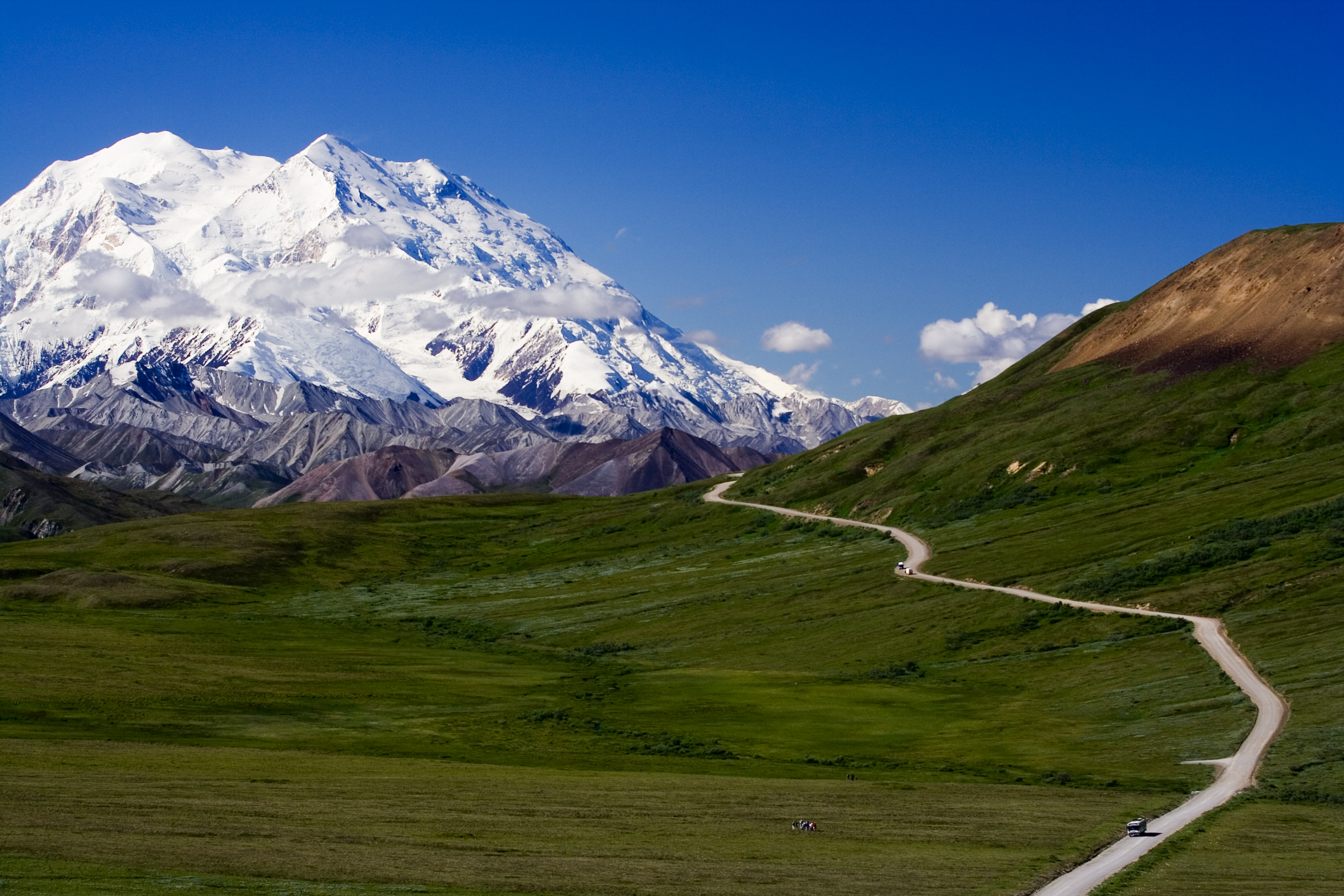 At 20,320 feet, Mount McKinley stands as the tallest peak in North America. Named after the 25th U.S. president, it is also known by the indigenous Athabascans of central Alaska as Denali, “the high one.”Whatever you call the mountain, its grandeur transcends any language. It is the primary attraction of Denali National Park, but it’s not the only draw. Visitors return fromthe 6-million-acre park with tales of grizzlies,moose, and golden eagles; of sweeping vistas of subarctic tundra, glaciers, and the massive peaks of the Alaska Mountain Range that almost rival the great peak itself. In summer you’ll enjoy 16–20 hours of light in which to take in all the dazzling scenery.
At 20,320 feet, Mount McKinley stands as the tallest peak in North America. Named after the 25th U.S. president, it is also known by the indigenous Athabascans of central Alaska as Denali, “the high one.”Whatever you call the mountain, its grandeur transcends any language. It is the primary attraction of Denali National Park, but it’s not the only draw. Visitors return fromthe 6-million-acre park with tales of grizzlies,moose, and golden eagles; of sweeping vistas of subarctic tundra, glaciers, and the massive peaks of the Alaska Mountain Range that almost rival the great peak itself. In summer you’ll enjoy 16–20 hours of light in which to take in all the dazzling scenery.3. Inside Passage and Glacier Bay
Alaska has over 40,000 miles of coastline, and you can take in some of
the most beautiful from your ship’s deck while sailing the Inside Passage. It stretches through 500 scenic miles in the southeast of the state,from British Columbia’s Queen Charlotte Islands in the south to the corner of Canada’s Yukon Territory in the north. Thirty-plus cruise lines sail here every summer, and long-distance ferries depart from Bellingham, Washington, year-round.
The big draw is the astounding wilderness, with snow-capped mountains, deep rain forests, and a maze of islands that are the home of whales, sea lions, sea otters, harbor seals, porpoises, and seabirds. Tucked into all that bounty are the towns. Ketchikan may be the most touristy; pretty Sitka, midway up Southeast, is less so, despite its 19th-century heyday as the unofficial capital of Russian America and onetime nickname, “Paris of the Pacific.” The icon-filled Russian Orthodox St. Michael’s Cathedral, built in the 1840s, stands at the center of town, and the Russian Bishop’s House now serves as a museum.
4. The Kenai Peninsula and Prince William Sound
| Kenai Peninsula, Alaska USA |
Lying across a narrow channel from metropolitan Anchorage, the Kenai Peninsula is like a movie trailer of Alaska highlights: incredible fishing, hiking, and kayaking opportunities; prolific wildlife; and to its east the stunning Prince William Sound, ringed by the steep and glaciated Chugach Mountains. From Anchorage, the scenic Seward Highway skirts the glacial Turnagain Arm Waterway, passing through some of the most extraordinary natural beauty in the state before reaching the town of Girdwood, 40 miles away. Here, the Alyeska Resort, a 1,000-acre ski area and luxury hotel, is a year-round destination with a stunning indoor pool, full-service spa, and an aerial tram to the mountaintop Seven Glaciers restaurant. The riveting view makes it hard to concentrate on the menu, which runs from Alaskan king crab to reindeer hot dogs.
Continue on to Cooper Landing on the Kenai River, where fishermen pull in some of the world’s biggest salmon. Keep going another 120 miles and you’re in the artsy town of Homer (population 500). Set on a stunning 5-mile finger of land called The Spit, it fancies itself both a cultural and fishing hub. Drop into Homer’s landmark Salty Dawg Saloon, an old trapper’s hut where tourists hoist their beers with local fishermen and cannery workers.
5. Canyon de Chelly
Owned by the Navajo Nation, one of 21 recognized tribes living in Arizona
(and the largest in the U.S.), Canyon de Chelly (de-SHAY) exudes a quiet
magic and spirituality that inspired mythology guru Joseph Campbell to call it “the most sacred place on Earth.” Along with Monument Valley, the canyon is considered one of the holiest places in the vast Navajo Indian Reservation.
 |
Canyon de Chelly, National Monument
|
The Ancestral Puebloans (also known as the Anasazi) began carving multistoried dwellings into the sandstone walls around a.d. 700. Mysteriously abandoned in the 1300s,
they represent one of the oldest dwelling sites
in North America and—paired with the canyon’s
natural beauty—the principal attraction
of this 130-square-mile historic area.
6.Grand Canyon
Few things in this world produce such awe as the Grand Canyon. “It will
seem as novel to you, as unearthly in color and grandeur and quantity of its
 |
| The Grand Canyon |
architecture as if you found it after death, on some other star,” wrote a mesmerized John Muir, founder of the Sierra Club. The mile-deep chasm carved by the Colorado River is a staggering 277 miles long
and up to 18 miles wide. Its striated walls change color by the hour, shifting from crimson to orange to purple. No matter what time of day
you visit, you’re in for a treat. Most of the 4 million visitors per year head to the South Rim,about an hour’s drive north of Flagstaff, where the overlooks are the most dramatic and hiking trails wait to be explored. Here you’ll find the main visitor center and a few lodges, anchored by the grand El Tovar, the park’s man-made wonder. Built by Hopi craftsmen in 1905, with edge-of-the-world views, it is considered the crown jewel of national park lodges.
7.Lake Powell
Imagine the Grand Canyon and then fill it with water. That is Lake Powell—the nation’s second largest man-made lake, whose turquoise waters shimmer like a mirage in the red rock country of northern Arizona and southern Utah.The 710-foot-high Glen Canyon Dam was first proposed in the 1920s and completed in the 1960s, but the lake wasn’t completely filled by the Colorado River until 1980. Free tours from Carl Hayden Visitor Center take you inside the dam to see the gigantic turbines that generate power for states across the West.
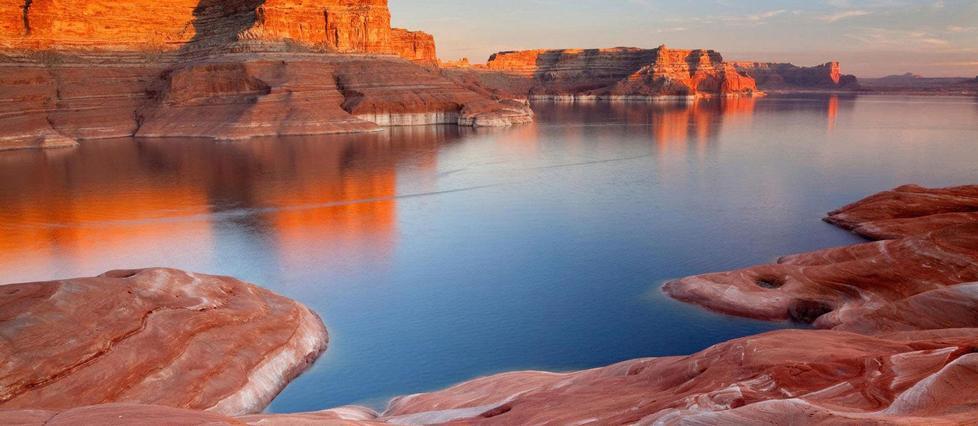 |
| Lake Powell |
Measuring 185 miles long and creating some 2,000 miles of more or less road-free shoreline, Lake Powell has become the “houseboat capital of America.” The red cliffs let onto more than 90 canyons (from mere slots to nearly 10 miles wide). Countless sandy coves and beaches can be explored by day, while nighttime means spectacular stargazing. Houseboats (from bare bones to deluxe) and sea kayaks are for rent at Wahweap Marina, in the busy gateway town of Page, Arizona, where accommodations on terra firma are also available. Small powerboats can be rented—anglers come for the lake’s year-round fishing—and cruises depart in the late afternoon for a scenic dinner on the water.
8. Monument Valley Navajo Tribal Park
The very embodiment of the old West, Monument Valley is a vast barren
plain punctuated by towering red-rock formations straddling the Arizona-
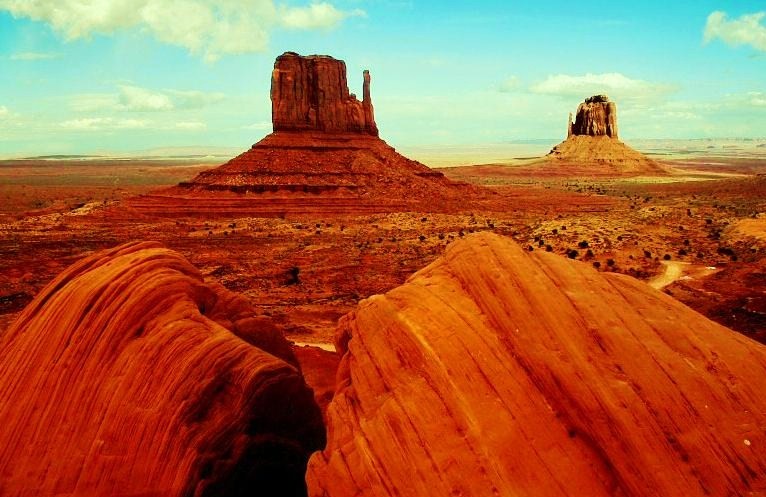 |
Monument Valley Navajo Tribal Park - A Mitten
|
Utah border. A spectacularly scenic—and rough—17-mile dirt road runs from the visitor center past mesas and starkly eroded buttes, some reaching 1,000 feet above the valley floor with names like Totem Pole, the Mittens, and Elephant Butte. If you want to
wander off the road, you must be in the company of a Navajo guide.
Monument Valley falls within the 27,000-square-mile Navajo Nation, roughly the size of West Virginia, where tribe members still live and farm among the skyscraper-size stone towers. To the Navajo all of Tsébii´ nidzisgai (“The Valley Within the Rocks”) is sacred. It’s special to Hollywood, too. Get an introduction to the area’s celluloid history at Goulding’s Lodge and Trading Post, established in 1924 by rancher Harry Goulding. It was Goulding who convinced director John Ford to use the setting as the location for his famous Westerns,
beginning with the 1939 John Wayne classic Stagecoach. This 62-room hotel was the only game in town for the film crew and the legions of visitors who followed, but the recent arrival of the Navajo-owned and run View Hotel introduces a new option within the Navajo Tribal Park. The plate-glass walls of the View’s atrium open onto the inspiring vista shared by the 95 guest rooms and a restaurant run by a talented Navajo chef. Watch how at sunset the entire valley seems to catch fire.
The small town of Window Rock is where you’ll find the Navajo Nation Museum and the Navajo Nation Fair every September. From there it’s not far to Tuba City, on one of the most eye-catching stretches of the Painted Desert. Come in October for the Western Navajo Fair and witness a town transformed by music, dancers, and a parade. Visitors are also welcome in the smaller Hopi Reservation, where 12 ancient villages are spread across three flat-topped mesas. The Hopi Cultural Center, in the heart of Second Mesa, is a combination museum, modest motel, and restaurant serving simple, traditional fare.
9. Golfing the Valley of the Sun
With over 200 golf courses and an average of 300 days of sun annually, the greater Phoenix area—known more poetically as the Valley of the Sun—has become one of America’s most popular winter destinations.
Much of Scottsdale’s reputation as a golfing mecca is thanks to Troon North and its two top-ranked daily fee courses: the Monument, designed by Tom Weiskopf and Jay Morrish, and Weiskopf’s Pinnacle. Guests at the adjacent Four Seasons Resort Scottsdale at Troon North enjoy priority use of the facilities as well as lavish accommodations with terraces overlooking the cacti and après-golf wine tastings.
The crown jewel of the valley’s top-ranked resorts is The Phoenician, with three nine-hole courses over 150 lush acres, the Centre for Well-Being spa, and a resident astronomer to interpret those clear desert skies. Not to be outdone, the oasislike Boulders Resort in nearby Carefree comes with breathtaking views of the Sonoran Desert, two 18-hole Jay Moorish–designed courses, and a Golden Door Spa.
10. Sedona and Red Rock Country
As if sculpted in crimson stone, the city of Sedona and its red rock towers
stand tall against pine green hillsides and a cerulean sky. Getting there
from Flagstaff is half the fun: Highway 89A takes you through Oak Creek Canyon and past eroded monoliths, and frequent pull-overs invite you to stop for photo ops or to splash about in the creek’s refreshing swimming holes.

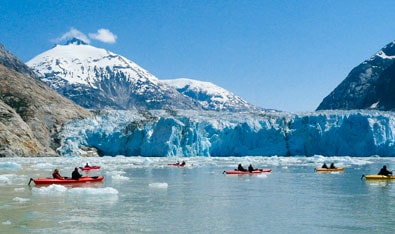
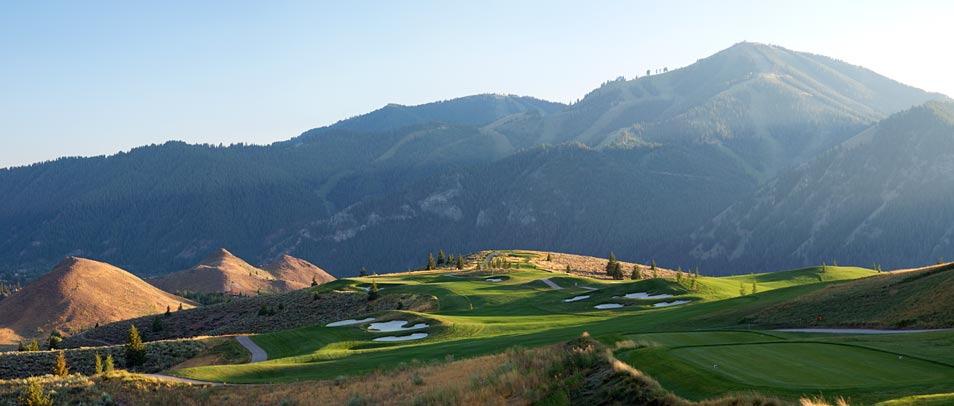
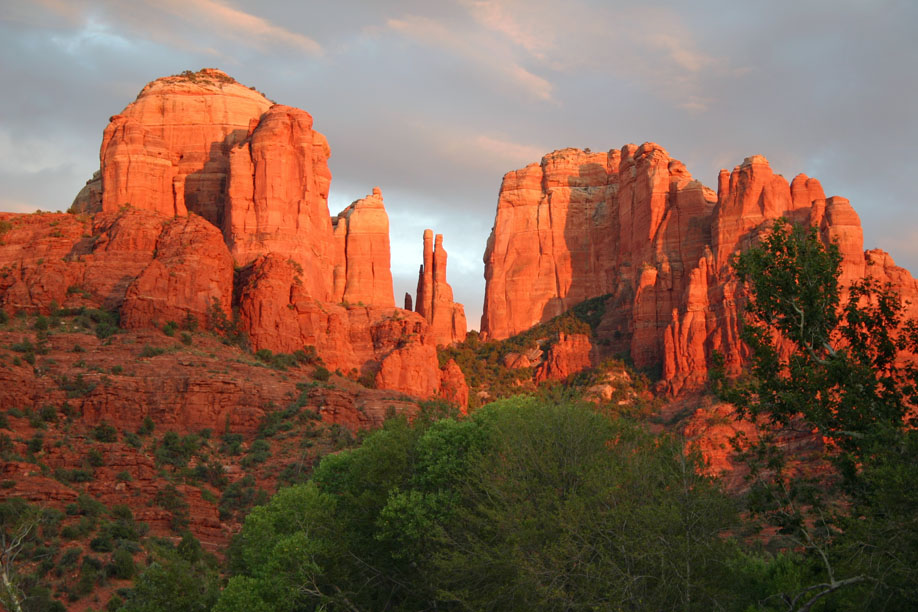
0 comments:
Post a Comment